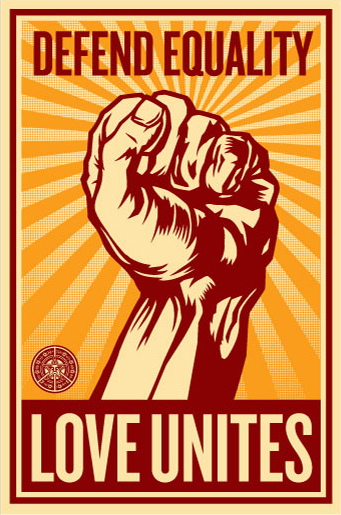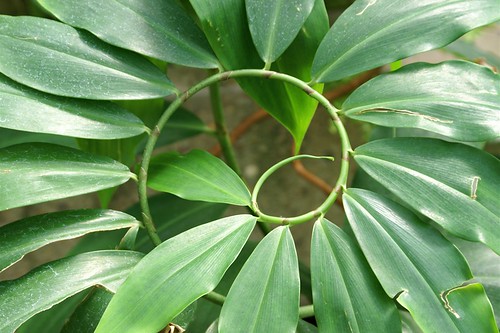
Street Farmer
Will Allen, a farmer of Bunyonesque proportions, ascended a berm of wood chips and brewer’s mash and gently probed it with a pitchfork. “Look at this,” he said, pleased with the treasure he unearthed. A writhing mass of red worms dangled from his tines. He bent over, raked another section with his fingers and palmed a few beauties.
It was one of those April days in Wisconsin when the weather shifts abruptly from hot to cold, and Allen, dressed in a sleeveless hoodie — his daily uniform down to 20 degrees, below which he adds another sweatshirt — was exactly where he wanted to be. Show Allen a pile of soil, fully composted or still slimy with banana peels, and he’s compelled to scoop some into his melon-size hands. “Creating soil from waste is what I enjoy most,” he said. “Anyone can grow food.”
Like others in the so-called good-food movement, Allen, who is 60, asserts that our industrial food system is depleting soil, poisoning water, gobbling fossil fuels and stuffing us with bad calories. Like others, he advocates eating locally grown food. But to Allen, local doesn’t mean a rolling pasture or even a suburban garden: it means 14 greenhouses crammed onto two acres in a working-class neighborhood on Milwaukee’s northwest side, less than half a mile from the city’s largest public-housing project.
And this is why Allen is so fond of his worms. When you’re producing a quarter of a million dollars’ worth of food in such a small space, soil fertility is everything. Without microbe- and nutrient-rich worm castings (poop, that is), Allen’s Growing Power farmcouldn’t provide healthful food to 10,000 urbanites — through his on-farm retail store, in schools and restaurants, at farmers’ markets and in low-cost market baskets delivered to neighborhood pickup points. He couldn’t employ scores of people, some from the nearby housing project; continually train farmers in intensive polyculture; or convert millions of pounds of food waste into a version of black gold.
With seeds planted at quadruple density and nearly every inch of space maximized to generate exceptional bounty, Growing Power is an agricultural Mumbai, a supercity of upward-thrusting tendrils and duct-taped infrastructure. Allen pointed to five tiers of planters brimming with salad greens. “We’re growing in 25,000 pots,” he said. Ducking his 6-foot-7 frame under one of them, he pussyfooted down a leaf-crammed aisle. “We grow a thousand trays of sprouts a week; every square foot brings in $30.” He headed toward the in-ground fish tanks stocked with tens of thousands of tilapia and perch. Pumps send the dirty fish water up into beds of watercress, which filter pollutants and trickle the cleaner water back down to the fish — a symbiotic system called aquaponics. The watercress sells for $16 a pound; the fish fetch $6 apiece.
Onward through the hoop houses: rows of beets and chard. Out back: chickens, ducks, heritage turkeys, goats, beehives. While Allen narrated, I nibbled the scenery — spinach, arugula, cilantro.
If inside the greenhouse was Eden, outdoors was, as Allen explained on a drive through the neighborhood, “a food desert.” Scanning the liquor stores in the strip malls, he noted: “From the housing project, it’s more than three miles to the Pick’n Save. That’s a long way to go for groceries if you don’t have a car or can’t carry stuff. And the quality of the produce can be poor.” Fast-food joints and convenience stores selling highly processed, high-calorie foods, on the other hand, were locally abundant. “It’s a form of redlining,” Allen said. “We’ve got to change the system so everyone has safe, equitable access to healthy food.”
Propelled by alarming rates of diabetes, heart disease and obesity, by food-safety scares and rising awareness of industrial agriculture’s environmental footprint, the food movement seems finally to have met its moment. First Lady Michelle Obama and Secretary of Agriculture Tom Vilsack have planted organic vegetable gardens. Roof gardens are sprouting nationwide. Community gardens have waiting lists. Seed houses and canning suppliers are oversold.
Allen, too, has achieved a certain momentum for his efforts to bring the good-food movement to the inner city. In the last several years, he has become a darling of the foundation world. In 2005, he received a $100,000 Ford Foundation leadership grant. In 2008, the MacArthur Foundation honored Allen with a $500,000 “genius” award. And in May, the Kellogg Foundation gave Allen $400,000 to create jobs in urban agriculture.
Today Allen is the go-to expert on urban farming, and there is a hunger for his knowledge. When I visited Growing Power, Allen was conducting a two-day workshop for 40 people: each paid $325 to learn worm composting, aquaponics construction and other farm skills. “We need 50 million more people growing food,” Allen told them, “on porches, in pots, in side yards.” The reasons are simple: as oil prices rise, cities expand and housing developments replace farmland, the ability to grow more food in less space becomes ever more important. As Allen can’t help reminding us, with a mischievous smile, “Chicago has 77,000 vacant lots.”















1 comment:
We all need to support and create more community gardens, their are people in the community who could use this skill and definately the resources.
Post a Comment